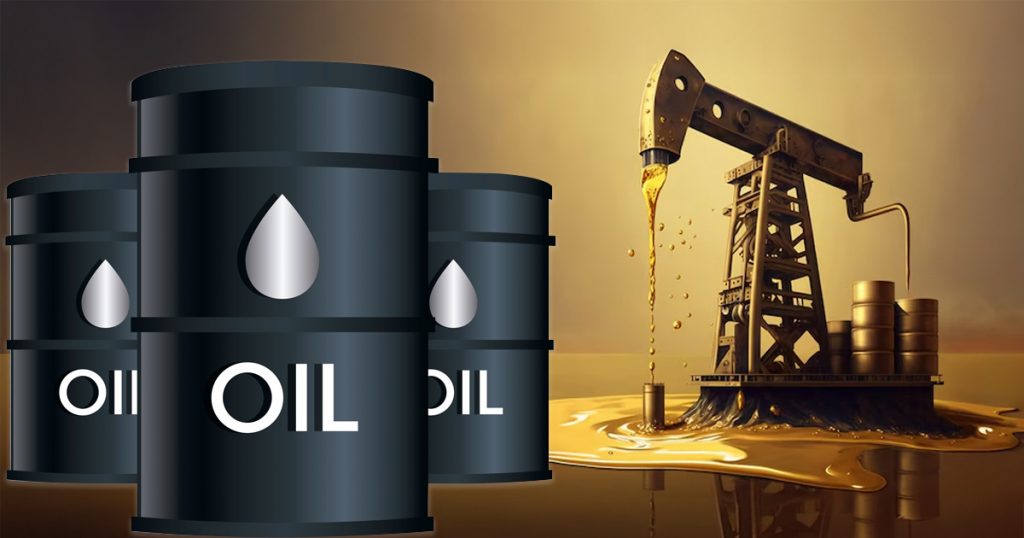Oil continues to fuel the engine of modern civilization, touching everything from transportation to global trade. Despite the push for clean energy, oil continues to fuel economies and transportation. So it’s no surprise that many investors still ask if oil is a good investment in 2025.
It all comes down to what you’re aiming for, how much risk you can stomach, and how deeply you grasp the oil game. Investing in oil comes with real opportunities, but also major risks. Before jumping in, it’s worth exploring both the upsides and challenges based on today’s market conditions.
The Global Role of Oil in 2025
Oil still powers much of the global economy. From cars and planes to shipping and factories, crude oil remains a basic necessity of modern life. Even as green energy grows, oil demand holds strong across industries.
Geopolitical tensions have kept the spotlight on oil. Conflicts like Russia’s war in Ukraine and the Israel-Iran standoff continue to drive up prices. The threat of closing the Strait of Hormuz, a key route for Middle East oil exports, has made headlines again this year.
Because oil reacts quickly to global events, investors often use it to hedge against uncertainty. That’s one reason investing in oil is compared to holding gold. It can serve as a store of value when inflation or political risks rise.
The Case For Investing in Oil
One of the biggest appeals of oil is its potential to bring in strong returns. When demand rises or supply drops, prices often surge. This benefits both oil producers and investors with oil exposure.
In 2025, oil will still act as a useful inflation hedge. It’s also a way to diversify a portfolio, especially if you’re heavy in tech or bonds. Investing in oil companies can be particularly rewarding if you pick those with strong cash flow and low debt.
Several oil firms, including ExxonMobil and Diamondback Energy, remain profitable even at lower crude prices. These firms keep expenses in check and reward investors regularly with share buybacks and dividend payouts.
Risks That Can’t Be Ignored
Even with its upside, oil is far from a sure thing. The greatest challenge lies in unpredictable price swings. Oil prices can shift dramatically in a short time and even dropped below zero during the COVID-19 crisis, which was an unprecedented event.
That kind of extreme price drop shows how sensitive oil is to supply-demand imbalances. And today’s market faces similar issues. OPEC+ has recently increased production, which could flood the market. The U.S. Energy Information Administration predicts supply will outpace demand by nearly 800,000 barrels per day in 2025.
This oversupply puts downward pressure on prices. Brent is expected to average just $63 per barrel in the second half of this year. If demand slows or another recession hits, prices could fall further.
Another concern is the long-term impact of clean energy policies. Electric vehicles and renewable power could reduce oil demand over time. Many governments aim to phase out fossil fuels by 2035 or sooner. This shift may lower investor interest and hurt the value of oil stocks.
Oil spills and environmental risks also add pressure. Incidents like the Deepwater Horizon disaster caused stock prices to drop sharply and led to long legal battles. These accidents make investors think twice, especially those focused on ESG standards.
Dividend cuts are another red flag. During the 2020 oil crash, Shell slashed its dividend for the first time since World War II. If commodity prices stay low, other companies might follow.
How to Invest in Oil in 2025
You have several ways to gain exposure to oil, each with its own level of risk and complexity:
1. Oil ETFs
These are a simple way to track oil prices without managing contracts yourself.
Popular funds include:
- United States Oil Fund (USO)
- ProShares K-1 Free Crude Oil Strategy ETF (OILK)
They mimic crude price movements but may not track perfectly due to how they’re structured. Oil ETFs are often better for short-term trading than long-term holding.
2. Oil Futures
This is a direct but complex way to invest in oil.
- You buy contracts to purchase oil at a set price on a future date.
- Futures involve leverage, which can amplify profits and losses.
- Prices can move quickly, requiring close monitoring.
Because of the risk, oil futures are better suited for seasoned traders with experience in commodities.
3. Investing in Oil Companies
Buying individual oil stocks can be a more stable option.
- Major producers like Chevron and Devon Energy maintain strong balance sheets.
- These companies often pay dividends and benefit from both price increases and production growth.
- Good management and efficiency can help reduce exposure to falling oil prices.
4. Oil Stock ETFs and Mutual Funds
These funds offer a diversified way to invest in oil companies.
Notable options include:
- Energy Select Sector SPDR Fund (XLE)
- Vanguard Energy Fund (VGENX)
- Fidelity Select Energy Portfolio (FSENX)
They spread risk across multiple holdings, which protects you if one company underperforms. However, they can still be affected by broader industry downturns.
Digging Deeper Before You Drill
Oil might tempt you with its profit potential, but don’t invest just because prices are moving or headlines are dramatic. Whether you’re drawn to its defensive appeal or wary of its volatility, the better question to ask is: What role should oil play in my portfolio, if any?
Think of oil not just as a way to grow your money, but as a mirror of the world’s political, environmental, and economic shifts. It’s a powerful asset, but not a quiet one.

